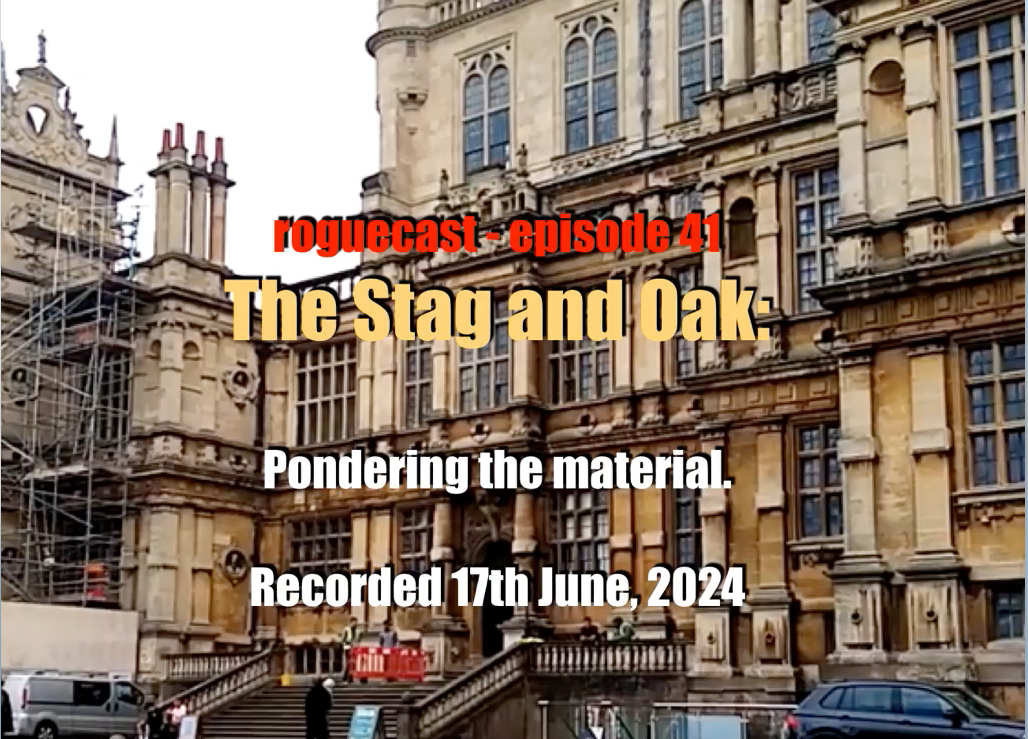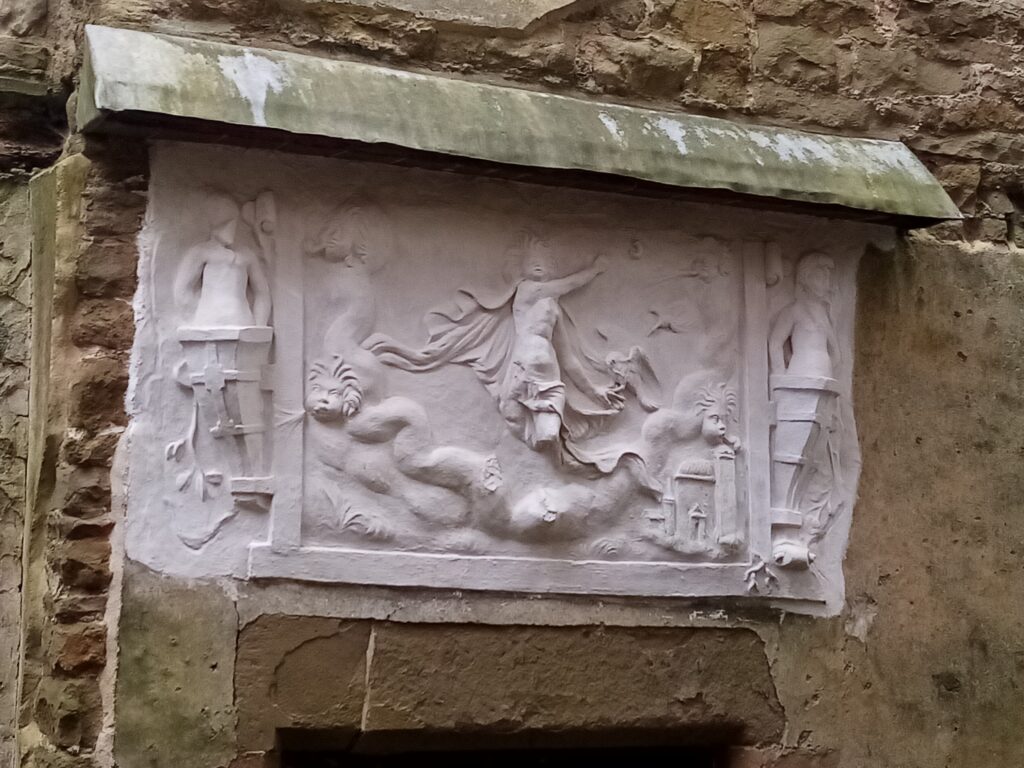You are cordially invited to join me on a walk around Wollaton Park, Nottingham in which I muse upon the so-called material reality of this realm and encounter a posse of stags and an ancient oak tree. It was inspired by two recent visits to the National Trust properties at Sudbury House and Hardwick Hall.
Both the stag and the oak have ancient and metaphysical associations (see footnotes).
Whenever I hear the official narrative of these places, I immediately question it:
Who built all the stately palaces, castles and associated architecture? From where the materials sourced? Who were the master craftsmen and stone masons? How many were there and how many builders were working on the sites? How were the materials transported if the roads were unmade and the builders only had horses and carts to rely on? How could they create such exquisite architecture without power tools?
As ever, there are more questions than answers but all narratives are there to be challenged and in this Rogue Cast I ponder the narrative about ‘Bess of Hardwick’ which is pushed by the National Trust guides.
Please buy me a coffee and leave a comment in the event you appreciate the podcast. Thank you.
Footnotes:
Magnificently beautiful, mysterious and elusive, the stag has always been awe-inspiring animal. Gentle, and yet swift and strong, the stag inspired many poets and writers throughout the centuries, and have been important part of many cultures, religions and mythologies of the world. Their habitat, the woodland realm, has also had strong ambivalent symbolism, as place of the freedom of injustice and oppression, as in Robin Hood or as transgressive place full of unknown dangers, as the one in Dante’s Inferno. Being constantly object of human interest, stags have always been hunted, and that hunt in literature became metaphor for life-changing quest, in which the road is more important than the finish line. The stag, the forest and the hunt are intricately united in many stories and myths of our world.
The stag had important role in the Scythian mythology and art. Due to excavations during 20th century, we became acquainted with Scythian culture. Scythians were the equestrian nation, who migrated a lot throughout Asia. Because of their nomadic life, their art was portable, and most of it was found on belts, weapon-ornaments and personal jewelry. The most known object of Scythian art is Golden Stag from Kostromskaya, Russia, that is believed to originate from 7th century B.C. The animal motif has deeply religious, totemic and talismanic nature, especially given the fact that it is part of the personal property. The stag is believed to represent male prowess in battle, and antlers resembling tree (family tree) were regarded as the symbol of male fertility. Source
The oak –
Throughout the major cultures of Europe people have held the oak tree in high esteem. To the Greeks, Romans, Celts, Slavs and Teutonic tribes the oak was foremost amongst venerated trees. In each case associated with the supreme god in their pantheon, oak being sacred to Zeus, Jupiter, Dagda, Perun and Thor, respectively.
Each of these gods also had dominion over rain, thunder and lightning. It is no coincidence that oak trees are more prone to lightning strikes than many other trees. This is because of the tree’s high water content and the fact that they are frequently the tallest living things in the landscape. Source
As Charles Fort put it,
“A seeker of Truth. He will never find it. But the dimmest of possibilities— he may himself become Truth.”
One viewer on the YouTube channel made an interesting comment:
A lot of these mansions were built or rebuilt with underworld worship in mind. They seem to have a lake or a large pond and some king of building on the other side of this body of water. Even in the hellfire cave they have a stream running through it and a small platform on the other side. And a church was built on top of the cave with a giant golden globe on top directly over the stream in the cave. It’s worth a visit, and a good place to have a picnic on top of the hill by the church.
You can see 6 counties from there. Wrest Park in Bedfordshire is a good example. The Gray family knocked down the old mansion and rebuilt it a few yards from the original place , and built a long pond and at the end they build a strange little folly with four rooms coming off a main room, each room had its own little fire place. Their own little Hades.
This is backed up by what exists at Hardwick Hall and Wollaton Hall. Wollaton Hall has a number of underground tunnels and a ‘reservoir’ underneath it. There’s a series of fish ponds near Hardwick Hall, one of which has an ice house. The ‘guide’ seemed a little uneasy talking about it when I asked her about it to the point of not telling me its direct location. There were some very strange features in the tapestries and the stone carvings over the fireplaces of the ‘old’ Hardwick Hall. Here is one example which, at least to my eye, looks like a recent construct, which may add more to the mystery of exactly what is being covered up by the National Trust:





